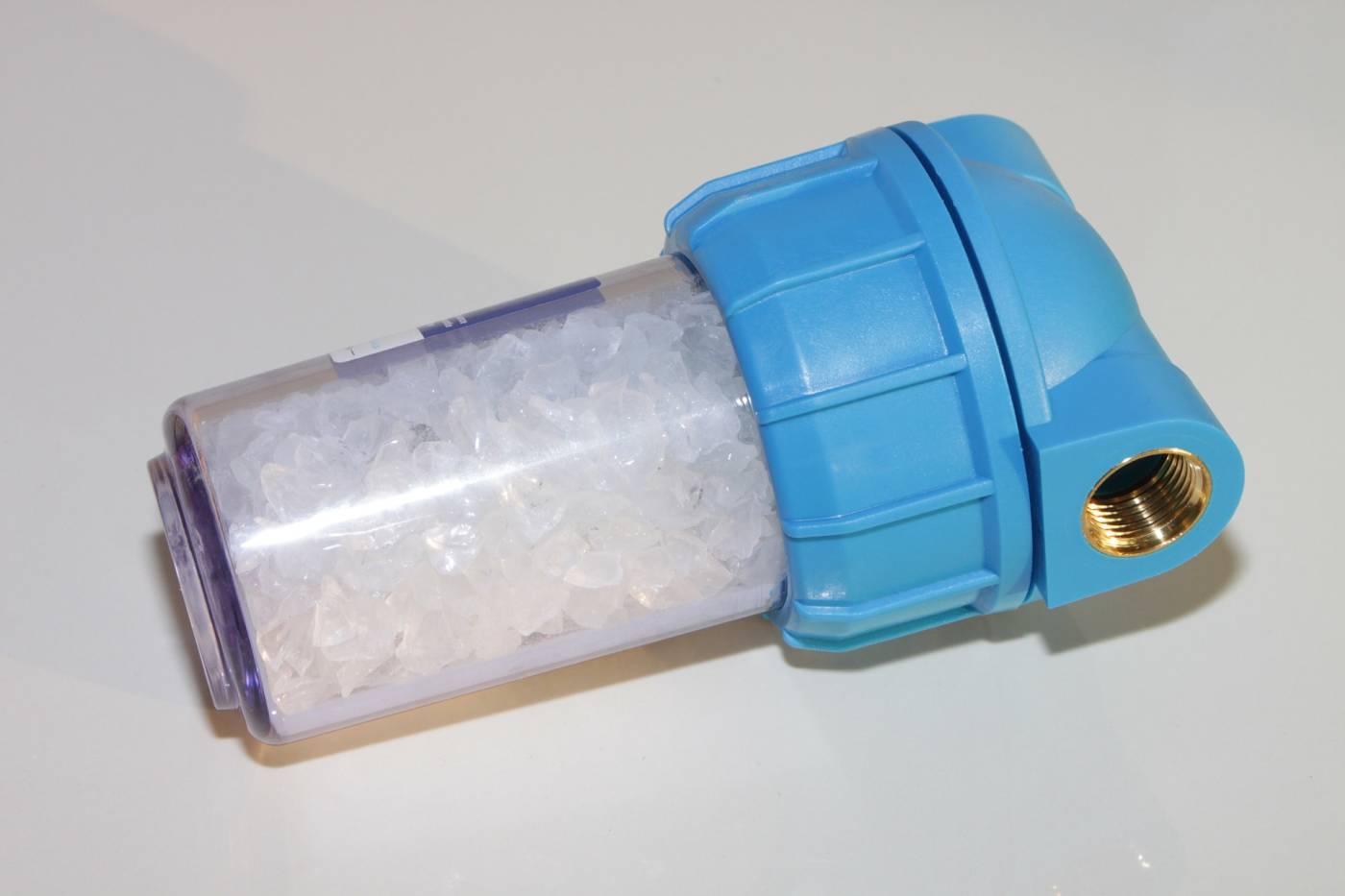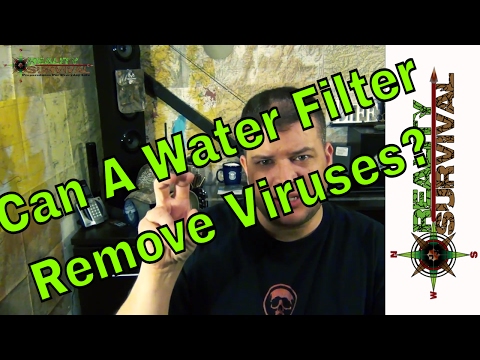Maintaining access to drinkable water is a major survival imperative. One of the very best ways that preppers can ensure they will always be able to furnish themselves and others clean water is by carrying and using a portable water filtration device. These ingenious, compact filters remove nearly every contaminant that might be found in water, except the very smallest.
Can modern water filters remove viruses? No, the vast majority cannot, though some can. This is entirely dependent on the efficiency and rating of the filtration membrane itself. Most typical household water filters will not remove viruses, whereas high performance filters utilizing a nano-rated filter will, as well as some other specialized methods.

Your water filter might catch all of the dirt, debris, and even the bacteria, but it could leave the viruses behind. Viruses, as we have all painfully learned recently can completely ruin your life… or worse…
In the remainder of this article we will dish a little more about viruses and the filters that can, hopefully, remove them.
Viruses are Incredibly Small
To understand why virus filtration is anything but a sure thing with common water filters, we must first learn a little bit about viruses. Viruses are so small, their life cycle so strange and their method of reproduction so odd they can hardly be said to be alive at all. Nonetheless, they are an incredibly plentiful and varied form of microorganism.
Viruses are so small they measure anywhere from a tenth of a micron to 110,000 of a micron in size.
Pause for a moment and consider that a micron is a thousandth of a millimeter. That means we are talking about creatures that are mind-bogglingly, insanely tiny!
But, despite being so tiny they are fairly insidious living and reproducing inside the cells of living hosts by subjugating the biological processes conducted by the cells themselves. Spooky stuff when you stop and think about it.
While the sheer variety of viruses is equally stunning, the vast majority of them worth talking about do nothing but harm once inside our bodies.
Some of them make us sick like the common cold and influenza viruses. Others will make us gravely ill. Still others will kill us with a high degree of certainty. All from something that is so tiny it is impossible to see without significant visual augmentation.

Not All Water Filters Are Up to the Task
As you have probably guessed, trying to trap something as infinitesimally tiny as a virus is extremely challenging. But modern water filters are really good.
The secret is in their filtration membranes, typically a later or even the last stage in the actual filter package with previous stages blocking and filtering out larger debris and contaminants before the final stage.
A filter membrane has pores in it that are so tiny to the naked eye it looks like a solid sheet of material. But nonetheless they are small enough to allow water to pass through while jointing even the tiniest micron sized and fraction of a micron sized contaminants.
But as impressive as this is, a filtration membrane might still have openings large enough to permit viruses to pass through, and ride along with your clean water. Talk about a major bummer.
The next logical step, therefore, is to verify precisely how capable the filtration package in our water filter is. To do that, we must know exactly how big or how small the final stage membrane openings are.
Understanding Filtration Capability
Generally, a helpful starting point when assessing how capable a filter claims to be at reducing or eliminating viral contamination in your water is by verifying how small a particulate, in microns, that the filter package can be expected to stop. Generally, this figure will be expressed as a fraction of a micron to the nearest decimal point.
The most common shorthand used to describe filter capability in this realm is microfiltration, ultrafiltration and a nanofiltration in ascending order of a capability. So how capable is each of these unique ratings? Let’s break it down.
Micro-filtration capability implies a filter capable of stopping any particulate that is 0.1 microns in size or bigger. This is a pretty daggone good filter by anybody’s standard, but not good enough for our purposes, as this will let some bacteria and pretty much all viruses through.
Next is ultrafiltration capability, capable of catching all the bugs that are 0.01 microns in size or bigger. This is a highly effective water filter to be sure, and we’ll catch the vast majority of bacteria in the world and even some viruses, but there are plenty of viruses far smaller than this.
The final rating is nanofiltration, capable of nabbing any germs that are 0.001 microns in size or bigger. This is the gold standard for a water filter capable of clearing your water source of viral contamination and it will nab virtually all known viruses.
If you are considering a conventional water filtration solution, you must make sure it is nanofiltration rated, and laboratory tested.
As with all products, manufacturers make bold claims that oftentimes don’t hold up under real world use conditions and they’re rating of nanofiltration might only apply for a pitiful quantity of water over a comparatively short period of time. You will need full-time nanofiltration capability for the life of the filter if you are going to rely on it in a survival situation!
Specialty “Filtration” Methods
There is one method of purifying your water that does not rely on a filter of any kind and will nonetheless render water of incomparable purity. The method is, of course, distillation. Distillation works by converting water to steam before condensing it back into water in a separate vessel.
This is a fairly foolproof method so long as you can pull it off, as the process ensures that any and everything in the suspect water is left behind once it changes to steam. All the sediment, bacteria, germs and teeny, tiny viruses will all stay behind harmlessly, leaving you with incredibly pure, safe water to drink.
Distillation is often employed on an industrial scale for desalination and water reclamation efforts, but for our purposes distillation can be put to use with powered gadgets capable of sitting on your kitchen countertop or even in a field improvised method employing plastic wrap in a sort of “solar oven” setup.
Distillation is also viable on a larger scale in a post-SHTF setting by using nothing more complicated than a laboratory glass setup and some burners.
Don’t Forget to “Double-Tap”!
It would be great if your water filter was capable of reliably snagging viruses from the outset when treating a suspect water source so you can get straight to drinking, but don’t forget that even if you have a “lesser” water filter that will, nominally, let some virus specimens through, you can hedge your bets and drink easier by boiling your water after filtration.
Most viruses cannot survive elevated temperatures to say nothing of the searing heat of boiling water, so assuming you have the fuel and the time, get your harvested, filtered water going at a roiling boil for a minute or two, and you’ll be certain of having made it as safe as possible.
Conclusion
Water filters may remove viruses, but they must be capable of filtering out particles on a “nano” scale, meaning thousandths of a micron in size. The vast majority of them simply aren’t up to the task.
Viruses vary in size, but many are so small they can easily slip between even the incredibly fine filters of many water filtration devices.
It is also imperative you understand your filter’s laboratory rated filtration specifications in order to understand exactly how long you can expect the level of performance necessary for catching viruses to last under normal field conditions.
via Modern Survival Online https://ift.tt/3zA2TOc
No comments:
Post a Comment